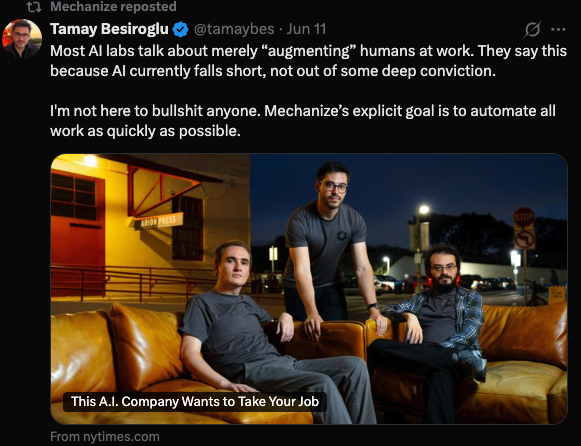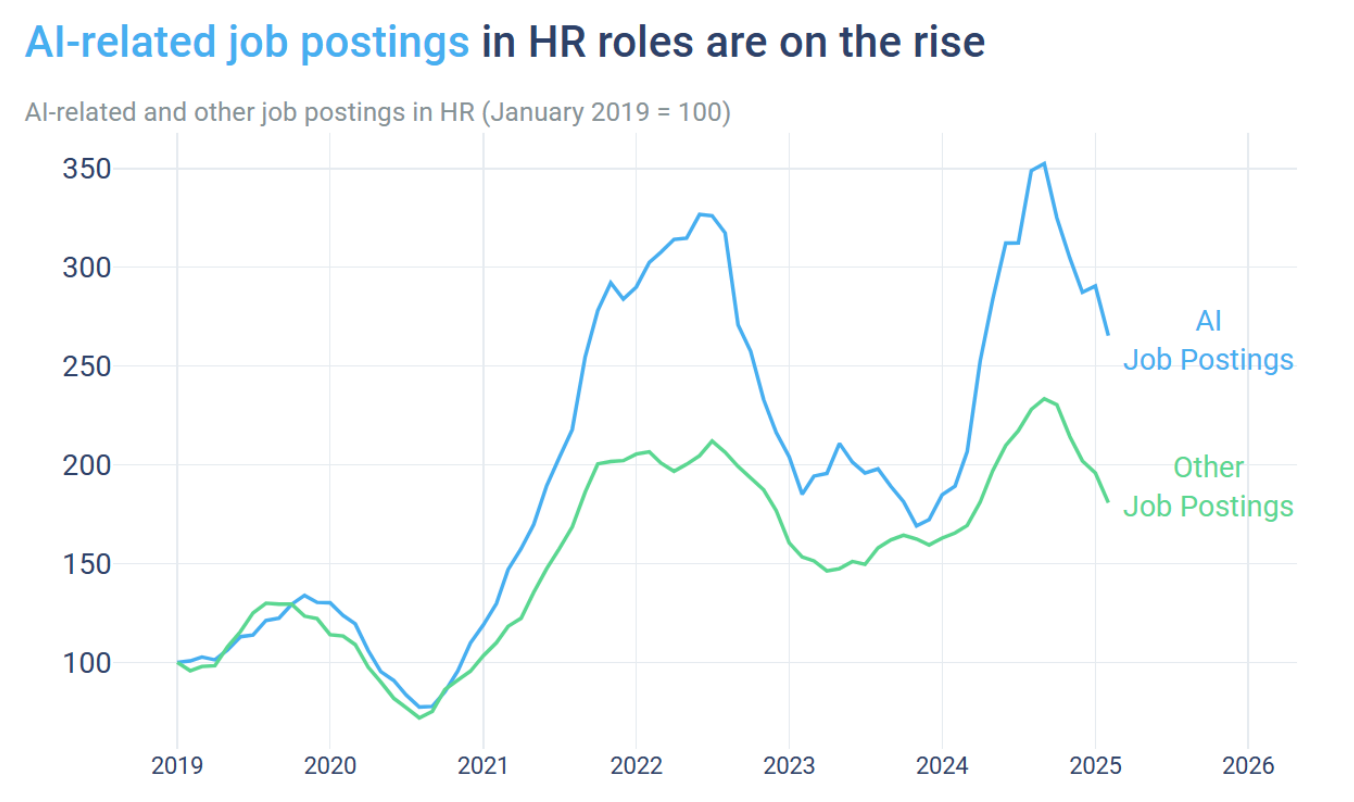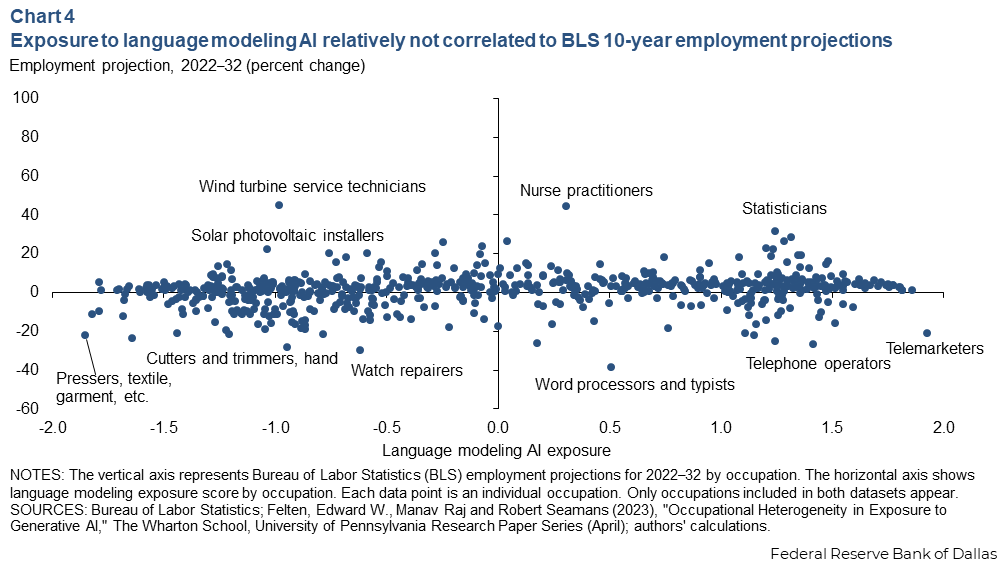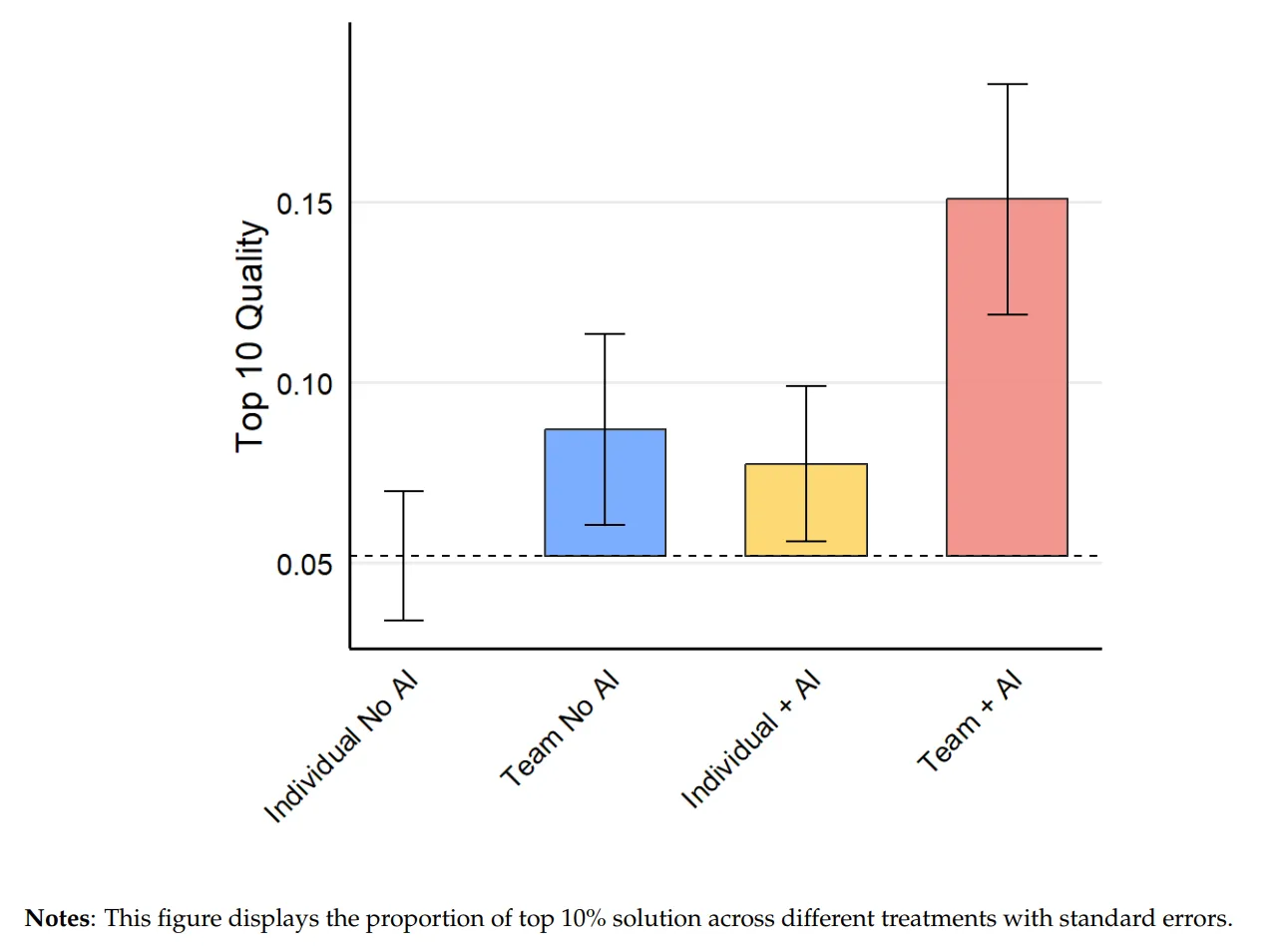You'll get deep dive essays, curated headlines, and plug-and-play methods for working with AI.
Fearless Future or End of All Work? 3 Observations About AI and Jobs
|
In April 2025, an AI startup named Mechanize grabbed everyone’s attention with some jarring words in its launch announcement: “[our] explicit goal is to automate all work as quickly as possible.”
In May, Anthropic’s CEO sounded the alarm that AI would soon cause the mass extinction of jobs, eliminating half of all entry-level white-collar jobs in the next five years. Workday announced plans to cut its headcount by 1,800 jobs. Amazon recently said it would reduce its headcount by 14,000 roles. Shopify's hiring has been flat as its CEO is only keeping jobs ‘that AI can’t do.’ And this isn’t limited to customer service or developer jobs; in May, IBM said they used AI to reduce a couple of hundred HR roles (so that they could hire more sales and programming jobs). CEOs across the board are saying in more assertive terms that they expect AI to flatten their organizations and stifle their hiring, according to the WSJ. But, but, butApocalyptic job replacement isn’t the full story. Swedish Fintech company Klarna recently reversed course on its pledge to replace 700 customer service reps with AI, signaling that it still wants to offer human interaction when supporting customers. Labor analysis firm Revelio Labs reported an increase in HR roles since 2019, especially those that include AI in the job posting. PwC’s recent “Fearless Future” report confidently proclaimed that “contrary to fears about job losses, job numbers—and wages—are growing in virtually every AI-exposed occupation, including the most highly automatable jobs.” Oh, and about Anthropic CEO’s take on the mass AI job extinction? NVIDIA’s CEO disagrees with pretty much everything.
Source: Revelio Labs So, what’s going on?Are we witnessing the beginning of widespread job elimination? The dawn of unprecedented job creation? Or something less dramatic in between? Let’s be honest. No one can predict the future of work with absolute certainty. We may want a simple-to-understand forecast, but the intersection of AI and employment is too complex. That said, we can ground ourselves in the patterns we see historically and the evidence we have today. Here are three data-backed observations that help cut through the speculation: 1/ Past technology transformations have led to net employment.Sure, there are differences between today’s AI-led work transformation and others:
These differences collectively make it hard to predict AI’s impact on the future of work and the labor market. Be cautious of anyone who claims to know exactly what will happen. Yet, we have history as a guide. Oxford researchers summarized 127 studies of technological transformations and found that technology does replace labor. However, a significantly higher proportion of studies found that technology has a net employment effect, as new tasks and roles emerge to replace those that are lost. Despite AI’s uniqueness, I haven’t yet seen or heard compelling reasons why we won’t follow a similar pattern. 2/ No relationship between job demand and AI exposure.Building on Frey and Osborne’s famous 2013 study on job replacement, the Dallas Federal Reserve Bank conducted a fascinating analysis comparing AI exposure to job growth projections. Their findings challenge a common assumption: Jobs most exposed to AI aren't necessarily the ones facing declining employment. While there are some jobs where AI exposure does result in a lower employment projection (such as word processors or telemarketers — any surprise?), in general, the researchers found that AI exposure is not related to whether a job will grow or shrink in the coming decade. The researchers validated their projections by studying historical patterns. Their analysis showed that "many jobs once feared to be at risk did not end up showing major decline in employment data.” Meaning? This evidence suggests a crucial distinction: while AI will certainly disrupt how work gets done, the fear of widespread job elimination isn't supported by the data. Jobs are more likely to transform than disappear entirely.
3/ Teams using AI are the most creatively productive workers.Harvard and Wharton researchers published an analysis of cross-functional teams at P&G working on a real business problem with and without AI. While individuals with AI could outperform individuals and even whole teams without AI, it was the teams using AI that performed best. This finding was even more stark when isolating the top 10 quality work products.
Although the researchers considered this test to be a ‘lower bound,’ the results showed the ways users benefit from AI use in terms of increased productivity and positive emotions (including excitement and enthusiasm rather than fear, anxiety, and frustration). These benefits may result in reduced team sizes as AI becomes an “active counterpart,” but there’s still value in human-AI collaboration, rather than complete human replacement. What should you do?As a leader:
As a worker:
We shouldn't be surprised when the corporate AI pendulum swings. When Klarna announced it would replace 700 customer service reps with AI, headlines blared. When they reversed course and rehired humans, the same happened. This pattern will continue as companies discover the real-world limitations of AI implementation (for example, when Cursor's AI customer service agent confidently fabricated a user policy, creating a PR nightmare and actual financial losses). What's becoming clear is this: the future isn't about blind AI adoption or fearful resistance. It's about thoughtful integration. Rather than throwing up our hands, either in surrender to AI or in rejection of it. We should prepare for a future that demands both new technical competencies and enhanced human skills. The companies and workers who thrive will be those who find the right balance, not those who simply replace or resist. |
Go from overwhelmed to in-demand AI Strategist (without hours of research)
You'll get deep dive essays, curated headlines, and plug-and-play methods for working with AI.



